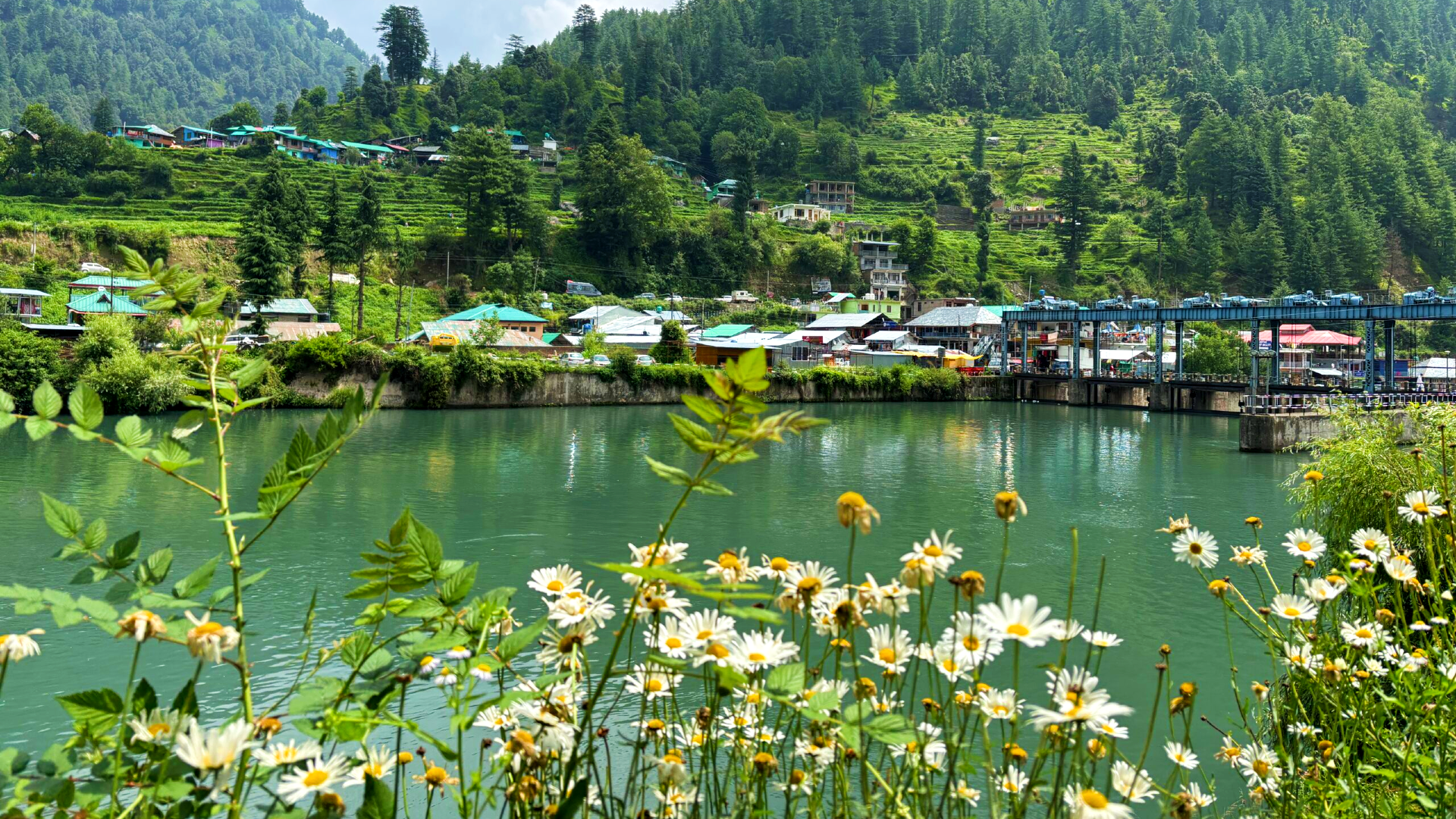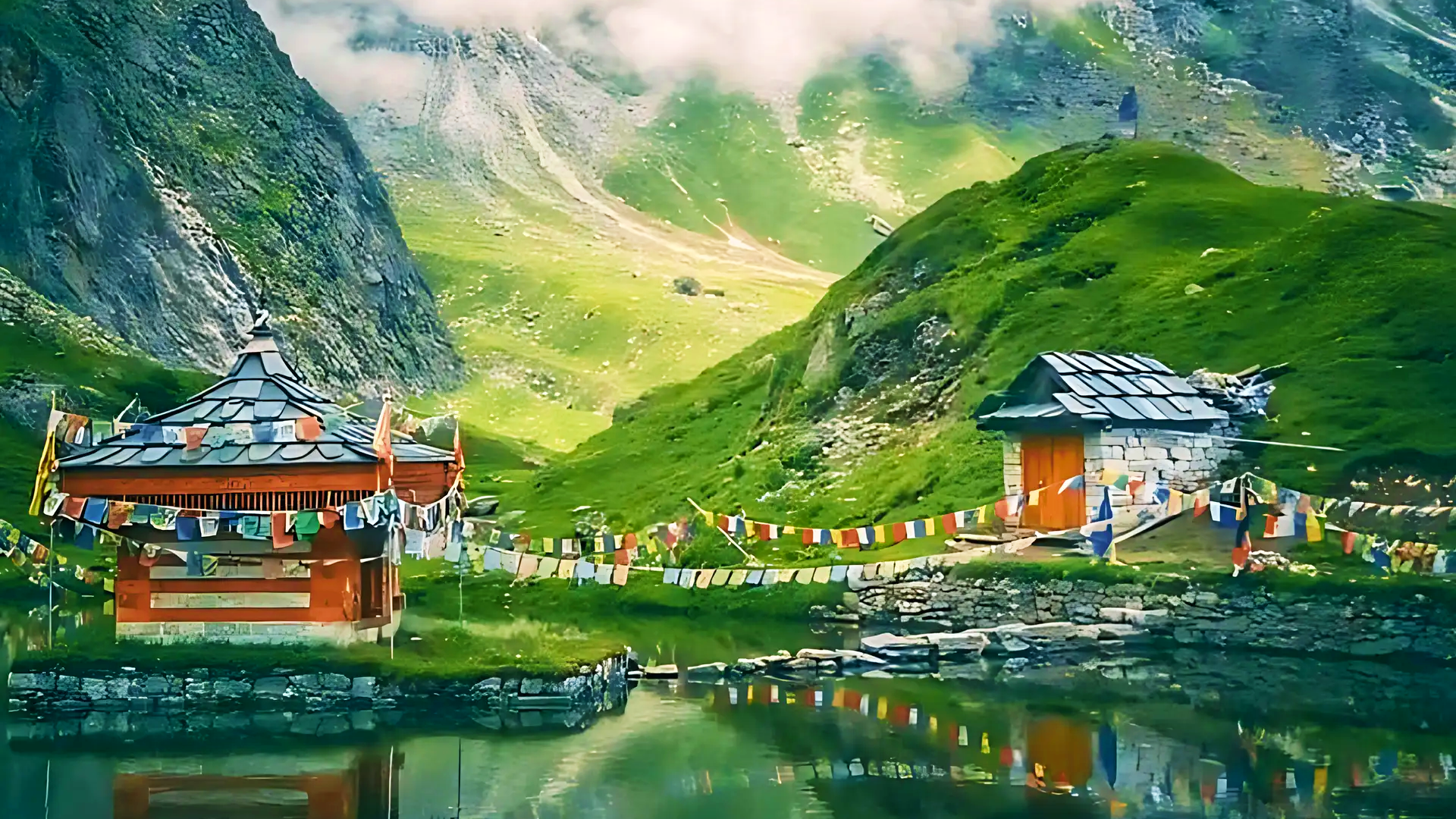New Delhi, the bustling capital of India, is a city where history and modernity coexist in perfect harmony. As the seat of the Indian government, it is not only the political epicenter of the nation but also a vibrant cultural hub.
From its ancient monuments and sprawling markets to its cutting-edge infrastructure and world-class cuisine, New Delhi is a city that offers something for everyone. Whether you’re a history buff, a foodie, or an avid shopper, New Delhi’s diverse attractions promise an unforgettable experience.
It’s such a hard task to filter out best places, when the city has such a vast history and you’re on a tight schedule. But don’t worry we got you, we have filtered out the 6 best places to visit in New Delhi with necessary details.
A Glimpse Into New Delhi’s History
New Delhi’s origins are deeply rooted in India’s rich history. While the modern city was officially inaugurated as the capital of British India in 1931, its historical roots date back thousands of years. The Delhi region has been the site of numerous ancient cities, collectively known as the “Seven Cities of Delhi,” including Indraprastha, the legendary capital of the Pandavas from the Mahabharata.
In 1911, the British decided to move their capital from Calcutta (now Kolkata) to Delhi. Renowned architects Sir Edwin Lutyens and Sir Herbert Baker were tasked with designing the new city, resulting in the creation of the iconic “Lutyens’ Delhi.” Today, New Delhi stands as a symbol of India’s journey through time—from its colonial past to its emergence as a modern nation.
Planning to visit Delhi?
- Booking Hotels: Booking.com, Agoda, MakeMyTrip and Hostelworld.
- Booking Cheap Flights: Skyscanner and Cheapflights.
- Booking Tours: Viator and GetYourGuide.
- Renting a Car: Ola, Uber.
- Travel Insurance: Heymondo. Get 5% off today!
Here is the list of 6 best places to visit in New Delhi.
1. India Gate
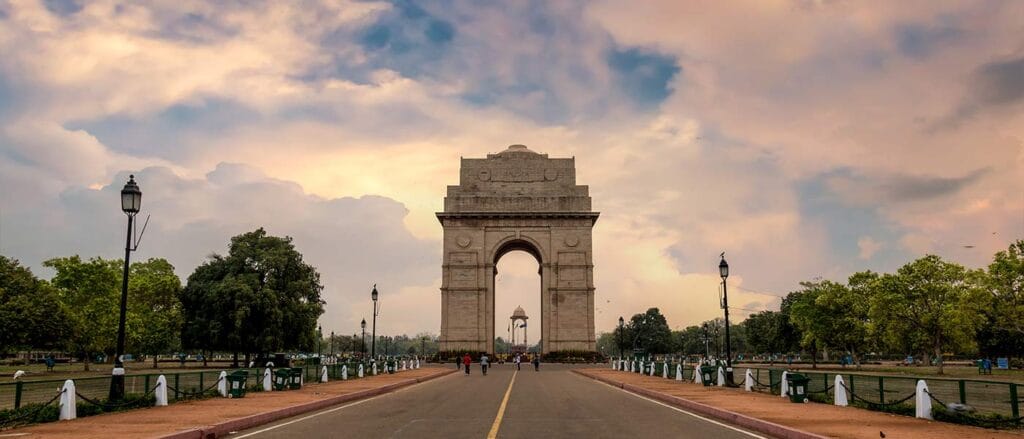
Finished in 1931 as a memorial to the 70,000 Indian soldiers who served and died in the First World War and the Third Anglo-Afghan War, Sir Edwin Lutyens designed the renowned 42-meter-tall India Gate. Originally the All India War Memorial, its walls bear the names of more than 13,000 troops. Added in 1971, the Amar Jawan Jyoti (Flame of the Eternal Soldier) honors the men lost in the Indo-Pakistan War. Surrounded by lush gardens, this is a popular place for picnics and evening walks.
Everybody’s admission is free.
Visiting is best in the evenings, between 5:00 and 9:00 PM. The area surrounding the monument is brightly lit and teeming with food vendors.
Because of the mild temperature, winter—from October to March—is ideal for outdoor sports.
Book cheap flights to New Delhi with Skyscanner
Traveling options for transportation:
The closest station is Metro: Central Secretariat (Yellow Line); a simple driving or walking trip from there.
Bus: Several DTC buses stop near Rajpath and India Gate.
Convenient and generally available from anyplace in Delhi are taxis and auto rickshaws.
2. Red Fort, sometimes Lal Qila
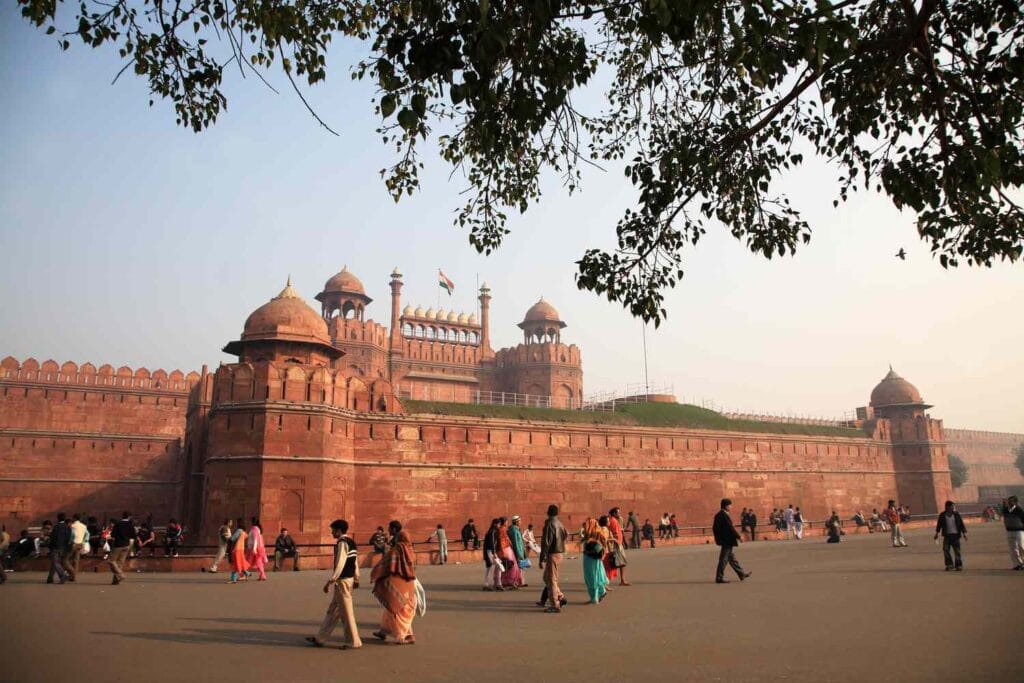
Built in 1638 by Mughal Emperor Shah Jahan, the Red Fort served as the royal residence and hub of power for practically two centuries. Among its buildings are the Diwan-i-Aam (Hall of Public Audience), the Moti Masjid, and the Rang Mahal. Its great Mughal architecture and massive red sandstone walls are well-known. The fort also stands for India’s freedom since the national flag was first hoisted here on August 15, 1947. It features an amazing Sound and Light Show currently that relates its historical relevance.
Children under fifteen enter free of cost; Indian nationals pay ₹50, overseas visitors pay ₹950.
For adults the Sound and Light Show costs ₹80; for children it costs ₹30.
The best time to go is morning (9:30 AM–12:30 PM), which is less congested and better for exploring.
In evening, enjoy the Sound and Light Show to understand further about the fort’s background.
Transportation Choice:
Metro: Just a little walk from the fort, Lal Qila (Violet Line) is the closest stop.
Bus: Red Fort stops routes 402, 405, and 419.
Easy means of get about Delhi are taxis or auto rickshaws.
3. Qutub Minar

Starting Muslim rule in India, Qutb al-Din Aibak built the 73-meter-tall Qutub Minar in 1193. Among the outstanding specimens of Indo-Islamic architecture, it is also a UNESCO World Heritage Site. Later rulers including Firoz Shah Tughlaq and Iltutmish enlarged its structure. Part of the Qutub Complex are the mysterious Iron Pillar, built in the fourth century and exhibiting advanced metallurgy, and the first mosque built in India, Quwwat-ul-Islam Mosque.
Things you should know before visiting New Delhi
Children under fifteen enter free of cost; Indian residents pay ₹40, foreign visitors pay ₹600.
Perfect for snapping images, morning (7:00 AM to 9:00 AM) is ideal time to go.
Winter (October to March): Being outside is more fun with the clean air.
Traveling Options:
The closest station is Metro Qutub Minar, Yellow Line. Go to the station and grab an auto rickshaw.
Bus: DTC buses stopping near the facility consist of the 717, 605, and 511.
Taxies and auto rickshaws are readily available.
4. Humayun’s Tomb
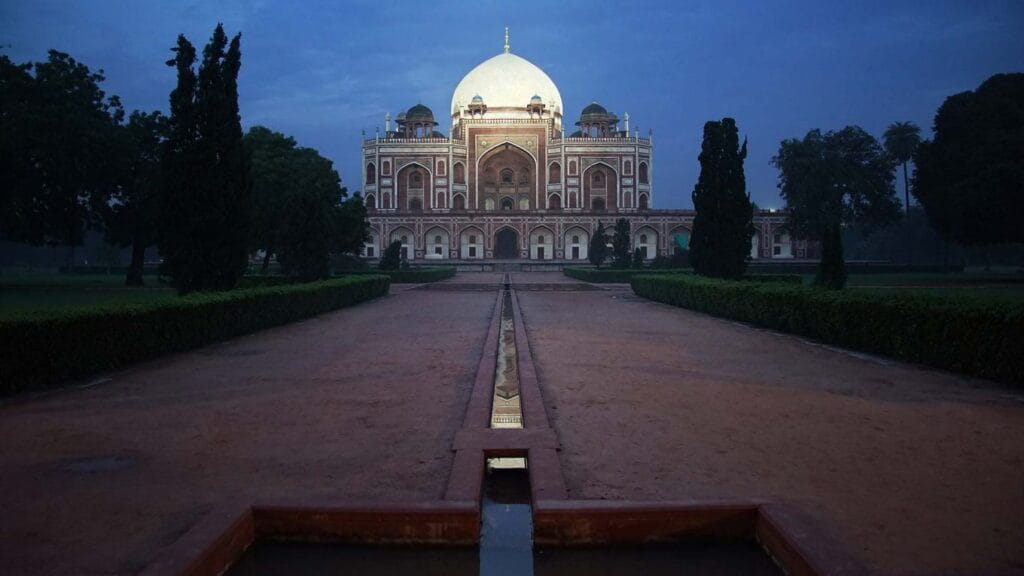
Built in 1570 by Empress Bega Begum, the earliest garden-tomb in India and a UNESCO World Heritage Site, Humayun’s Tomb Persian architect Mirak Mirza Ghiyas built the tomb combining Mughal and Persian architectural features. Surrounded by water systems and the Charbagh gardens, it was the Taj Mahal’s model. The compound also features some smaller buildings including the tomb of Isa Khan.
Children under fifteen enter free of cost; Indian residents pay ₹40, foreign visitors pay ₹600.
Sunrise or sunset is the ideal time to come since the monument is even more breathtaking under golden light.
Winter (October to March) is the ideal season to appreciate the gardens in cooler months.
Choices for means of transportation:
Metro: The closest stop is JLN Stadium on Violet Line. Arrange an auto rickshaw trip to the tomb.
Bus: Many DTC buses stop just a short trek or ride away from Nizamuddin.
Using a taxi or autorickshaw makes direct access handy.
5. Lotus Temple of Nature

Finished in 1986, the Lotus Temple is a Baháʼí House of Worship standing for harmony and peace. Like a lotus blossom, its 27 white marble petals, which stand for purity and peace, reflect Comprising nine pools, the temple provides a peaceful environment for meditation. Visitors of all religions are welcome to meditate in its quiet prayer chamber.
Everybody’s admission is free.
Perfect time to visit:
Weekdays; especially in the mornings, less crowded.
Winter (October to March) the lower temperatures make the outside walks more pleasant.
Visiting in the evening will help you to view the lit building.
Traveling Transportation Options:
Accessible on foot, the closest station is Metro Kalkaji Mandir (Violet Line).
DTC buses stop at either Nehru Place or Kalkaji.
There are easily available cabs and auto rickshaws.
Check out the best adventure activities in Delhi NCR
6. Connaught Place, or CP
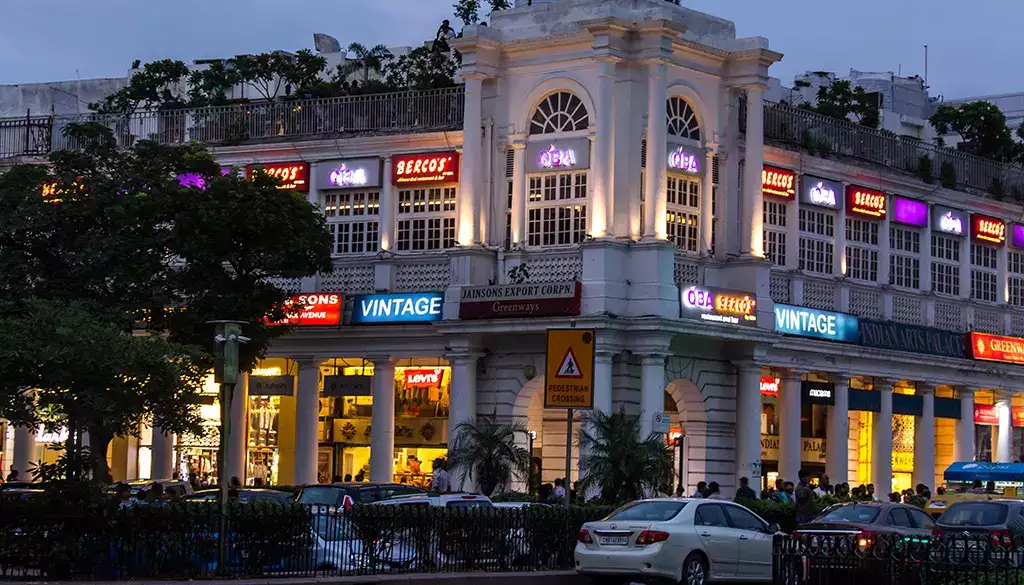
Built in the 1930s as the economic and cultural hub of New Delhi, Connaught Place—often known as CP—was Two instances of British urban planning are its circular layout and colonial-era building style. These days, CP is a busy spot to buy, eat, and hang about. Apart from chic boutiques and reasonably priced street shopping at Janpath Market, it offers a variety of restaurants, cafés and pubs.
There is no entry cost. Dining and shopping preferences affect costs.
Perfect Time for Travel:
Evenings (after 5:00 PM) bring street performers, brilliant lights, and lively crowds to the area.
Winter, October through February, has ideal conditions for walking and exploring.
Transportation Alternatives:
The nearest station to CP is Metro Rajiv Chowk (Yellow and Blue Lines), right in the middle.
A lot of DTC buses stop at or around CP.
For a taxi or auto rickshaw, direct access is handy.
Exploring the Local Culture
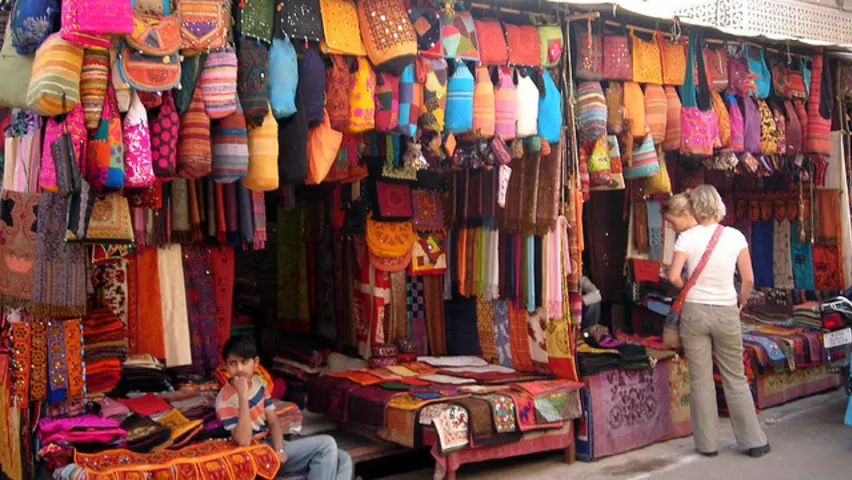
The cultural mix in New Delhi creates a vibrant street atmosphere which displays multiple social traditions. The annual Diwali Holi and Eid festivals in the city gain tremendous enthusiasm for residents and visitors to experience traditional Indian customs during celebrations. The traditional markets of Chandni Chowk present people with the chance to discover authentic Delhi traditions through their tight passageways and fragrant food stalls.
For art enthusiasts, the National Gallery of Modern Art and the Crafts Museum showcase India’s artistic heritage. The city offers its residents and visitors multiple cultural events through the Delhi International Arts Festival together with the Surajkund Mela that showcase India’s performing arts and artistic craftsmanship.
Culinary Delights
Individuals who love eating will find their ultimate destination in New Delhi. Visitors can follow a remarkable dining experience through New Delhi by sampling from its range of spicy street food alongside exquisite dining establishments. Don’t miss the chance to try:
The street snack chaat features three main dishes including golgappas together with aloo tikki and papri chaat.
You must taste Butter Chicken that originally hails from Delhi since it presents itself as a classic blend of cream with rich flavours.
The street market Paranthe Wali Gali in Chandni Chowk grants visitors the opportunity to sample different types of stuffed parathas.
Mughlai Cuisine allows guests to experience rich curries with kebabs and biryanis which originated from the period of Mughal rule.
South Indian Delicacies: Enjoy crispy dosas and flavourful sambhar at eateries across the city.
Getting Around the City
People visiting New Delhi can easily move throughout the city using its affordable and well-developed metro system. In addition to the metro system the city offers transportation through auto-rickshaws together with services provided by various cab applications. Cycle rickshaws in Old Delhi provide visitors with a personal experience through their route through tight alleyways and energetic marketplace.












